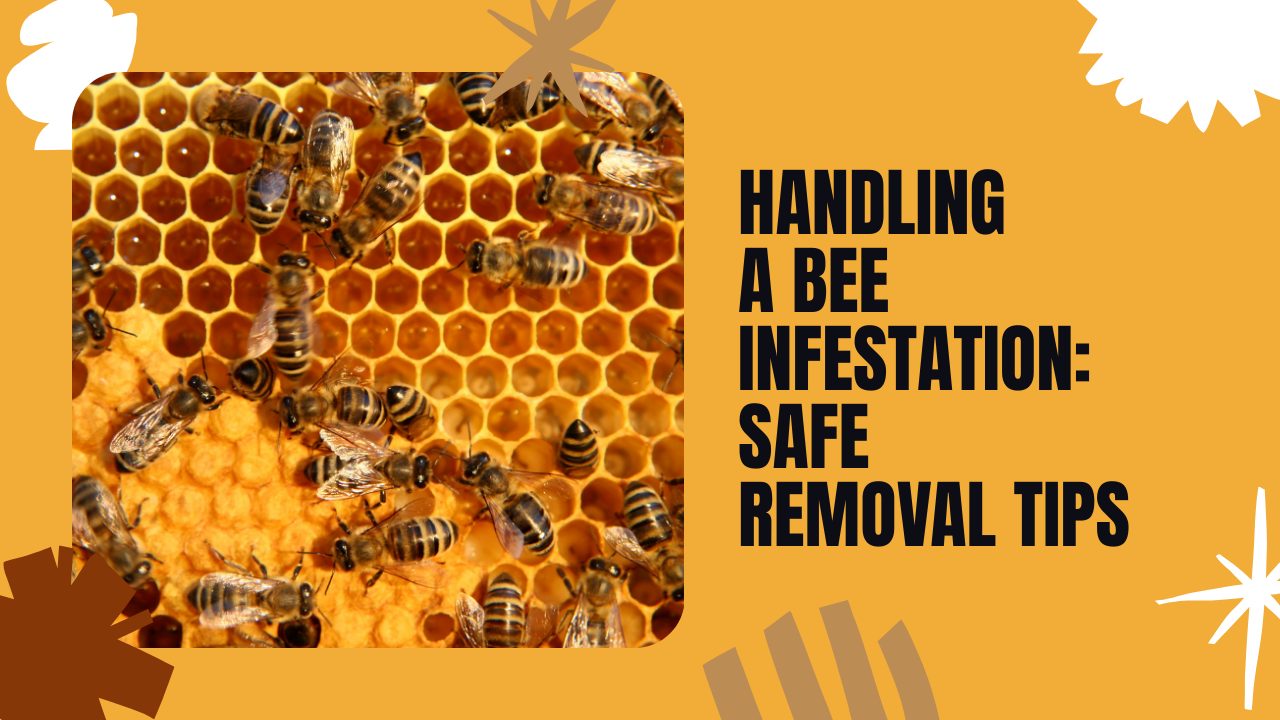Have you ever walked into your backyard only to spot a buzzing swarm of bees hovering near your roof or garden shed? For many Australian homeowners, a bee infestation is both alarming and confusing. Do you ignore it, try to handle it yourself, or call in the experts? Knowing the right steps to take can protect your home, your family, and even the bees themselves.
Why Bee Infestations Are a Growing Concern in Australia
Bees are vital for pollination and food production, but when they move too close to our living spaces, problems can arise. Across Australia, homeowners often discover hives in roof cavities, chimneys, or wall spaces, particularly in spring and summer when bee activity peaks.
Signs you may be dealing with a bee infestation include:
-
Constant buzzing near a fixed spot on your property
-
Clusters of bees entering small cracks or openings
-
Wax, honey, or droppings staining walls or ceilings
The concern is not only about inconvenience but also safety. Bees are generally non-aggressive, but when they feel threatened, they will defend their colony. For a busy family household, especially with kids or pets playing outside, this can be a major risk.
What Happens If You Ignore a Bee Infestation?
At first glance, a small bee colony may not seem like a big deal. But ignoring it can create serious consequences for both your home and health.
-
Health risks: Bee stings can cause painful swelling, and in some cases, dangerous allergic reactions. Even one sting could lead to an emergency situation if a family member has an allergy.
-
Property risks: Bee hives built inside wall cavities or roofs can cause structural damage. Honey and wax seep into walls, attracting ants, rodents, and other pests.
-
Safety for pets and children: Dogs, cats, or kids playing outside may disturb the bees unintentionally, sparking aggressive swarming.
For these reasons, it’s important not to put off dealing with bees at home.
DIY vs Professional Bee Removal: What’s the Right Choice?
When facing a bee infestation, many homeowners wonder: Should I handle this myself, or is it time to call a professional? The answer depends on the size of the hive, the location, and your comfort with risk.
When DIY Bee Removal Might Be Reasonable
If you’re dealing with a small swarm temporarily resting in your yard, DIY action could work. Sometimes bees stop to rest before moving on, and they may leave in a day or two without intervention. Gentle measures like spraying water to deter them or simply waiting it out can be effective.
When to Call Professional Bee Control Services
If bees have built a large hive inside your walls, chimney, or roof cavity, it’s not safe to tackle the job yourself. Professional bee control specialists in Australia have the right tools, protective clothing, and training to safely relocate bees without harming them.
Calling in experts also reduces the risk of injury and ensures proper removal, preventing future infestations. This is especially true if bees have been inside your property for a while, as honeycomb removal can be tricky and messy.
Safe Bee Removal Methods Every Homeowner Should Know
While the thought of bee removal might bring extermination to mind, many Australian services now focus on eco-friendly bee removal and relocation. After all, bees are crucial to the environment, and protecting them should be a priority.
Eco-Friendly Bee Removal Options in Australia
Professional beekeepers often work with pest control companies to safely relocate hives. Instead of destroying the colony, bees are transferred to managed hives where they can continue pollinating crops and gardens.
Some councils in Australia also provide guidance or even connect residents with local beekeepers who can remove and rehome swarms.
Tools and Safety Precautions for Homeowners
If you must approach a bee problem before experts arrive, safety is key:
-
Wear protective clothing such as long sleeves, gloves, and a hat with netting.
-
Attempt removal only at dawn or dusk when bees are less active.
-
Avoid spraying chemicals or using fire, as this can agitate bees and cause more danger.
These steps should be temporary measures until professional help can step in.
Preventing Future Bee Infestations in Your Home
Once a hive has been safely removed, prevention is the next step. No one wants bees making a return visit.
Here are proactive measures:
-
Seal entry points: Close cracks in roofs, chimneys, and wall spaces where bees might enter.
-
Maintain your garden: Trim overgrown shrubs, remove old logs, and keep compost bins secure.
-
Schedule inspections: Regular home checks can catch early signs of nesting before it becomes a major issue.
Preventative care not only protects your home but also reduces the stress of another unexpected infestation.
How Much Does Professional Bee Removal Cost in Australia?
One of the first questions homeowners ask is: How much will this cost me?
On average, professional bee removal services in Australia range from $150 to $500 depending on factors such as:
-
The size of the hive
-
Its location (roof, wall cavity, garden)
-
Accessibility and equipment needed
While DIY may seem cheaper, attempting removal yourself can lead to medical bills, property damage, or incomplete removal—making professional help more cost-effective in the long run.
Final Thoughts: Safe, Smart, and Bee-Friendly
Dealing with a bee infestation can be overwhelming, but the good news is you don’t have to face it alone. By recognising the signs early, understanding the risks, and choosing safe removal methods, you can protect both your family and your property.
When in doubt, always call a professional bee control service that prioritises relocation and eco-friendly practices. Not only will this safeguard your home, but it will also support the vital role bees play in Australia’s ecosystem.
With the right approach, you can keep your living space safe, comfortable, and even bee-friendly
